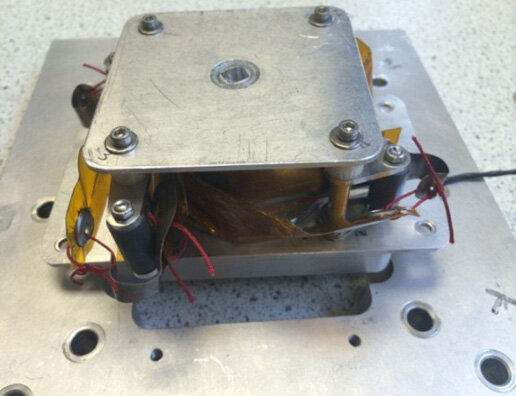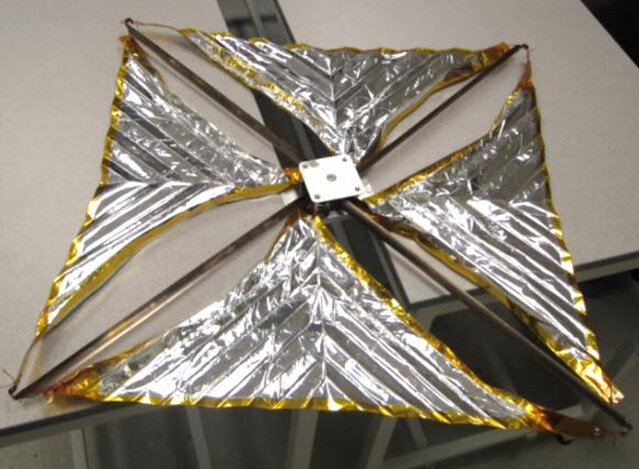De-Orbit Mechanism
The DOM team, supervised by Dr Jenny Kingston and Steve Hobbs, is composed of one PhD student, Chiara Palla, and has involved more than 12 MSc students. The team has developed a deployable sail that should increase the atmospheric drag and force the re-entry and burn-up of an old satellite in the Earth’s atmosphere.
Technology demonstrator for reducing space debris in Low Earth Orbit

Space debris is the collection of obsolete man-made objects orbiting the Earth. It represents a major risk to present and future space missions. ESA’s Clean Space initiative is creating Space Debris Mitigation requirements. The international interest in the problem is reflected in the Inter-Agency Space Debris Coordination Committee (IADC) mitigation guidelines, which indicate the removal of space systems that interfere with the Low Earth Orbit (LEO) region no later than 25 years after the end of the mission. New spacecraft will need robust and reliable systems for de-orbiting. Passive disposal strategies, which take advantage of atmospheric drag as a de-orbit force are particularly attractive because they are independent of spacecraft propulsion capabilities (many small satellites in Low Earth Orbit do not have propulsion systems).
The Cranfield De-Orbit Mechanism payload

The Cranfield De-Orbit Mechanism (DOM) is a drag sail technological demonstrator currently under development at Cranfield University. The payload unit is designed to deploy a drag sail at the end of the mission, thus enlarging the effective satellite area.
This will accelerate its orbital decay and disposal via atmospheric burn-up on re-entry. The design is based on the Cranfield Space Research Centre’s experience in de-orbit sails (e.g. Icarus 1 on TechDemoSat-1, launched in 2014). The DOM is a self-contained unit (140mm x 80mm x 56mm) of less than 0.5kg. It will be mounted on the side panel of the ESEO satellite. It houses tape spring booms, aluminised Kapton sails (each of 0.125 m2), and a release mechanism. The booms, which are made of copper-beryllium, and the sails, with a pattern developed from bio-mimetic ‘Miura-ori’ studies, are rolled up around a central spool in the middle of the device and held in position by Kevlar cords. The device is compactly stored in a single unit before deployment. Once the deployment command is sent, the Kevlar cords are cut and the strain energy stored in the boom arms is transferred into kinetic energy around the central spool, resulting in deployment.

The goal is to produce a final design capable of de-orbiting a range of satellites without the need for significant re-engineering.
Contact
Dr Jenny Kingston
j.kingston @ cranfield.ac.uk


